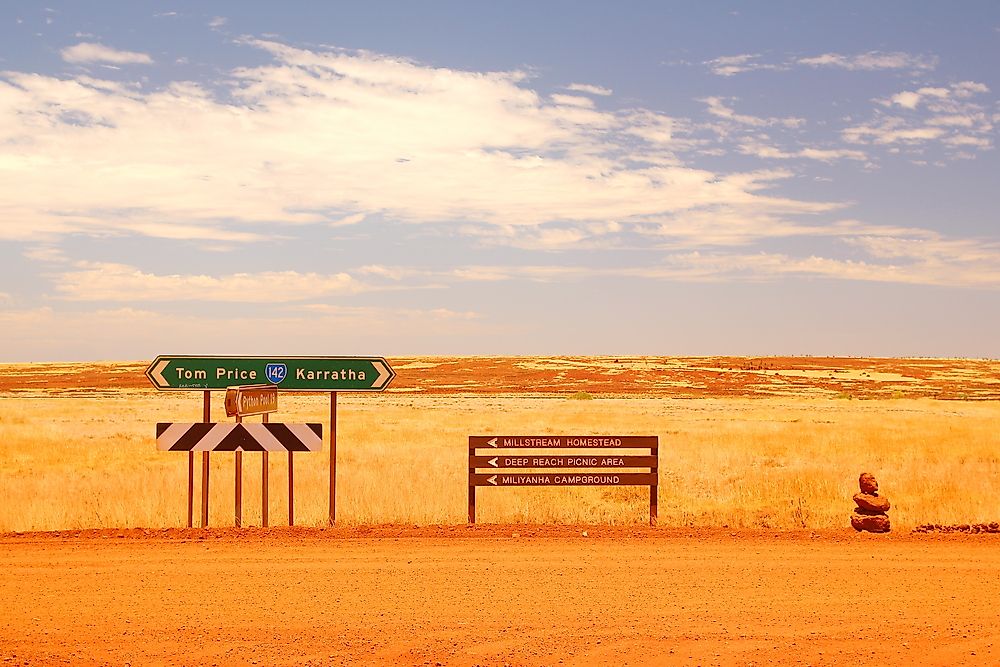The World's Flattest Continent

The Commonwealth of Australia is an independent nation comprised of the Australian continent or mainland, the Tasmanian Island, and several other small islands. The country is the world’s 6th largest in surface area and the largest in Oceania. Australia is a highly developed country, and it is ranked as the 13th largest economy globally. Australia is the oldest, driest, and the flattest inhabited continent in the world, and has a landmass that spread to cover 2,941,300 square miles. The country is megadiverse with numerous landscapes. There are deserts, tropical rainforests, and mountain ranges.
Australia: the Flattest Continent
The reason why Australia is the flattest continent is due to the large plateau covering most of the central part and forms the largest area of the continent. The Great Dividing Range refers to the long mountain range which begins near the east coast and stretches from the northern part of the territory of Queensland through the territory of Victoria and New South Wales. Besides being the flattest continent, Australia is the smallest continent in the world, and apart from Antarctica, it is the driest. The highest elevation in Australia is 7,309.7 feet above sea level at Mount Kosciuszko, while the lowest point is 49.2 feet below the sea level at Lake Eyre in South Australia. The average elevation is 1,082.7 feet above sea level. Approximately 20% of Australia’s land mass is comprised of the desert in the interior part, which is so dry, extremely hot, barren, and few people live in the region. The region is characterized by low annual average rainfall, while the whole of Australia has variable rainfall.
Australian Geology
The Australia mainland is the most primordial and the lowest landmass on earth lying on the Indo-Australian plate, having a history of a comparatively stable geological activity. The Australian landmass has almost all identified rock types spanning virtually all geological time epochs, which cover more than 3.8 billion years. The Pilbara Craton found in Western Australia is one of the only two oldest Archaean which date back to about 3.6 to 2.7 billion years ago, the other one is found in Kaapvaal Craton in South Africa. Geologists believe that the two locations were part of the Supercontinent of Vaalbara. The continental crust of mainland Australia has an average thickness of about 23.6 miles. The geology of Australia could be categorized into different sections showing that the continent grew beginning from the west towards east. The western portion of the country has an Archaean cratonic shield, the center portion has the Proterozoic fold belts, and the eastern part having igneous and metamorphic rocks, and the Phanerozoic sedimentary basins.
Climate
Australia’s climate is influenced by oceanic currents of the El Nino southern oscillation and the Indian Ocean Dipole, which correspond to the seasonal tropical low-pressure systems and periodic drought that results in cyclones particularly in the northern part of the country. These changes lead to rainfall variation from one year to another. The northern part of the country experiences mostly summer rainfalls also known as monsoons. The southwestern part of the country experiences a Mediterranean climate, while the interior has arid to semi-arid climatic conditions.
Biodiversity
Australia has a varied range of habitats, which range from tropical rainforests to alpine heaths. It is believed that Australia is home to about 250,000 species of fungi, out of which only 5% have been described. As a result of the continent’s extensive age, long-term geographical isolation, and extremely varied weather patterns, much of Australia’s biome is unique. Australia is home to the largest number of reptile species than any other country in the world totaling 755 species. Other than Antarctica, the continent is the only one which developed without any feline species, and the Dutch could have introduced the feral cat in the continent in the 17th century.











